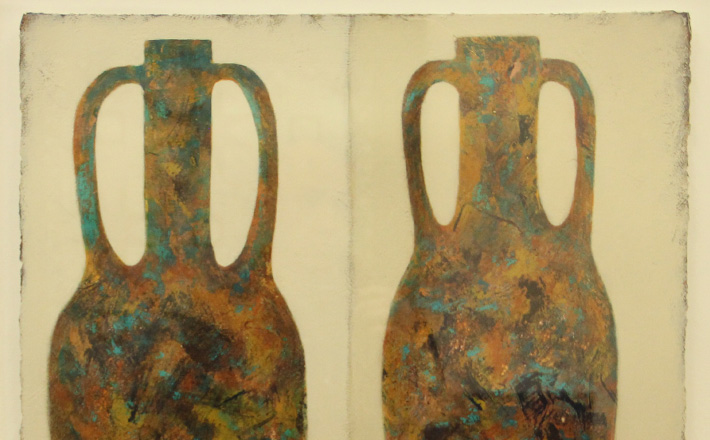Commentary on Psalm 126
Psalm 126 is a community song of trust or confidence that skillfully employs metaphor to proclaim God as the one who brings joy out of sorrow, laughter out of tears, and good out of evil.
To begin with, the opening idiom, “When the Lord restored the fortunes of Zion,” has caused problems in interpretation. The idiom, literally “to turn a turning” means “to restore/bring back” an earlier situation, as often in Jeremiah (29:14; 30:3, 18; 31:23; see Psalm 14:7; 53:6; Hosea 6:11). Older translations like the King James Version, however, took it to mean “bring back the captivity” (that is, the exiles in Babylon). But the post-exilic texts paint anything but a joyous return where economic hardship and disunity more commonly appear (Haggai 1:6-11; 2:16-19; Zechariah 7:8-14; Third Isaiah; Ezra-Nehemiah). Thus, verse 1 can refer to any of a number of possible “restorations.”
Our psalm is also part of a collection of psalms known as the “Songs of Ascents” (Psalms 120-134). Though this is the clearest example of a collection in the Psalter, due to their common superscription “a song of (Psalm 121: “for”) ascents,” and the only one that includes the constitutive psalms in a self-contained unit, the function of the collection as a whole continues to elude interpreters. The most likely proposals include:
- a prayer book for use on pilgrimages to the three prescribed annual festivals
- liturgical usage at specific Jewish festivals such as Booths
- the Mishnah’s suggestion of assigning one of the fifteen psalms to each of the fifteen steps in the Jerusalem temple (Ezekiel 40:26, 31) where the Levites supposedly stood to sing their praises.
Then again, perhaps the “steps” refer to a poetic trope often found in these psalms, anadiplosis, the staircase, terraced, or step-like repetition of words from previous verses (in our psalm “restore our fortunes” appears in verses 1 and 4, “the Lord has done great things for” and “then” (az) appear in verses 2 and 3, and “shouts of joy” appears in verses 2, 5 and 6; the trope also appears in Psalm 121; 122; 123; 127; 129; 130; 133). Others, noticing that in addition to “ascent,” or “step” ma’alah can also refer to the exiles’ journey back from captivity in Babylon (Ezra 2:1; 7:9), have drawn plausible connections to the exiles returning to Jerusalem. On the fifth Sunday in Lent, one’s imagination might even move in the direction of our Lenten journey.
In terms of structure the psalm falls into two stanzas (verses 1-3; 4-6) that mirror each other as alternating panels:
A Statement of Yahweh’s Past Restoration of Fortune verse 1a
B Comparison 1b
C Joy unmingled verse 2-3
A’ Prayer for Yahweh’s Future Restoration of Fortune verse 4a
B’ Comparison 4b
C’ Joy mingled with tears verses 5-6
A and A’ share references to the governing idiom “restore the fortunes” and “Yahweh.”
B and B’ are comparisons using the comparative kaph “like.”
C and C’ share references to “shouts of joy” (verses 2b, 5b, 6b).
C displays its own chiastic structure as well:
a gladness verse 2a
b great things verse 2b
b’ great things verse 3a
a’ gladness verse 3b
C’ on the other hand employs alternation like the rest of the psalm (though verse 5 chiastically arranges opposites: “sow : tears : joy : reap”):
a sowing in tears verse 5a
b reaping in joy verse 5b
a’ sowing in tears verse 6a
b’ reaping in joy verse 6b
Of interest, here, is the observation that C only contains references to joyful gladness. Israel’s mouth is filled with laughter, its tongue says nothing but shouts of joy, and both Israel and the nations acknowledge the “great things” that Yahweh has done. In C’, however, the pure joy of C is mingled with weeping.
Stanza One (verses 1-3) is further set off by the inclusio (hayiynu) “we were” (verses 1b, 3b).
These observations suggest that in Stanza One the community is looking back to a time when Yahweh had “turned the tide of Zion’s fortunes,” as the New English Bible rather colorfully puts it. Whether this was the return from Babylon or any of a number of other fortuitous events the community is overjoyed and gleefully ascribes their good fortune to the transforming power of God’s gracious activity on their behalf. Caught up in the unmingled joy of their situation they couldn’t believe it; it was a dream come true.
Stanza Two finds the community down the road but encouraged by their recollections to ask God to do it again. The mingling of joy and tears reminds us, as it must have reminded them that life is a mixture of joy and sorrow; but just as the parched Negev springs to life with the gully-washing grace of God’s winter rainfall, and as surely as the harvest follows the time of planting, God can be counted on to complete the good work already begun.
These themes seem to come together for those of us approaching the end of our Lenten journey in the relationship of sowing, death, resurrection, and fruit-bearing that Jesus shares in John 12:24: “unless a grain of wheat falls into the earth and dies, it remains just a single grain; but if it dies, it bears much fruit.”
May the tears of repentance give way to the joy of Easter.


March 17, 2013